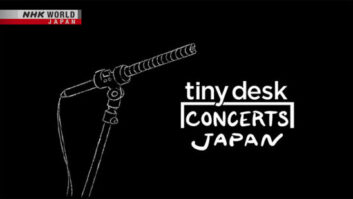(click thumbnail)Courtesy C. Crane Company Inc.As the RadioNet columnist for Radio World International, RW’s sister publication, I have been reviewing Internet radios for many years.
However, the Tangent Quattro Internet Radio is the first such receiver to be more than a temporary fixture on my desktop. In fact, I now rely almost exclusively on the Quattro for my workday radio listening, to the neglect of my wonderful Boston Acoustics Receptor AM/FM radio.
If you are looking for an Internet radio that is more than a network-dropping, tinny sounding toy, give the following a read.
The basics
The Tangent Quattro is made by Tangent Audio, the Danish company that also makes quality loudspeakers and mini Hi-Fi systems (www.tangent-audio.com). It is called the Quattro because this unit is the fourth offered in Tangent’s five-receiver lineup.
Aesthetically, the Quattro is housed tastefully in a curved-corner rectangular box; it’s about the size of a six-pack of beer, but a little shorter. It is available in white, black, high gloss red and walnut. I have the walnut model with its grey front panel, and grey top-mounted 3 inch, full-range speaker.
The front panel resembles a standard AM/FM late model receiver. In the upper center is a two-line, backlit LCD display. The top row shows tuning information; the bottom row indicates the speed and streaming format of your Internet connection.
The large silver knob on the left controls volume, while the right knob is used for tuning. Below this are two rows, with five buttons each. They are used for presets (five), to go back and forth when selecting stations, to access MP3s from any connected PC and to set the Quattro’s clock radio, among other things.
On the back of the Quattro is a jack for the 12V power supply (included), Line Out, Headset and Aux In. All three audio connectors are standard female mini jacks.
Setup
Assuming that you have a WiFi network with a Web connection, the Tangent Quattro is relatively easy to set up.
Its onscreen menu walks you through the step for connecting to the WiFi network. If you have security enabled, the Quattro lets you use the tuning knob and an onscreen button to input the right encryption key. This sounds complicated, but I found it faster and easier than sending text messages from a cell phone.
Once the Quattro has connected to the Web, it goes to Reciva.com, which provides the thousands of station addresses that the Quattro can tune.
After the latest station information is downloaded, you can start to surf the Internet for stations.
To do so, you use a combination of the tuning dial and the Quattro’s Select key, which is located just under the knob. You start by telling the receiver whether to search by Station or Genre, then drill down to choose by other criteria such as format (’60s, Classic Rock, News, and so forth) or location. You can even use these two in combination: first by selecting a specific country, then the format of station you want to hear from there.
Once you have found the station you want — say Beethoven Radio, under Classical — you press the Select button again, and the Quattro connects to it. If you don’t like what is on, you just push the Back button, and it returns you to your last menu. If you really like what is playing, you can assign the station to one of five preset buttons, for quick recall later on.
You can also tune to MP3s stored on your computer, as long as it is on the same network, and play them through the Quattro.
Performance
There are two simple reasons the Tangent Quattro has become my preferred listening source at work.
First, the audio streams almost never drop out; they are nearly as reliable as the signals from off-air FM radio stations.
Second, the audio quality from the top-mounted speaker is very good. Meanwhile, when I plug my high-end Logitech computer speakers into the Quattro’s headset jack, the audio quality is even better.
Still, as with any form of technology, there are things that could be improved on this unit.
First and foremost is stereo, or rather the lack of it. Many Internet radio stations stream stereo signals. It seems silly that the Quattro is not equipped to play them back in full.
Second, the text-only LCD display is hard to read from an angle, which is the case when it is sitting on a desktop well below my eye level.
Third, the tuning process, although simple, is not really intuitive. It is based on a computer “click back and forth” way of doing things, rather than a traditional radio interface.
Also, this receiver would benefit from separate Bass and Treble functions, or indeed any kind of tone modification control at all.
Finally, a remote control would be a really nice touch.
But the Tangent Quattro is a remarkable Internet radio. In fact, it is a remarkable radio, period. Though sharing my office Internet connection, it never seems to slow down my desktop computer on the Web.
Meanwhile, its stability in finding and holding specific audio streams is impressive. I tell myself that it’s a fluke; after all, my PC is using the same broadband connection. So why do I have audio dropout problems when I tune into Beethoven Radio on my PC, and almost never on my Quattro?
Whatever the case, one thing is certain: The Tangent Quattro is a tabletop Internet radio that has earned its place on my desktop. You can find it online at www.ccrane.com for $349.95, and decide if it deserves a spot on yours too. Further information is also at www.tangent-audio.com.
C. Crane owner Bob Crane told us: “By the time you read this article, the new model will be out with an Ethernet jack on the back for direct connection to a router. Also the FM band is included, and an improved WiFi antenna is promised too.” A Tangent official told RW the MKII version is expected to retail for $399.95.













